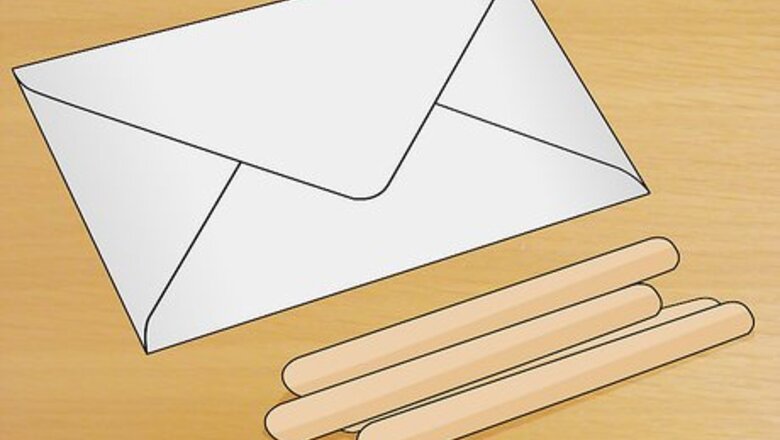
views
Using Leverage and Water
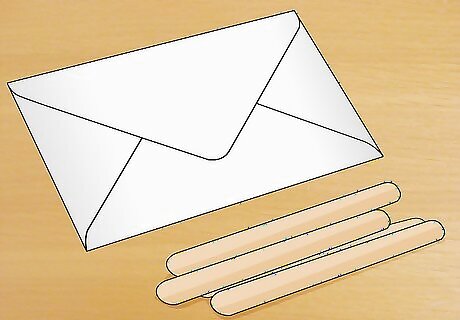
Try this first to reduce chance of damage. This method works best on envelopes of thick paper, or envelopes with poorly attached glue, but it's tough to predict whether it will work on a given envelope until you try it out. Although it is not as effective as steaming the envelope open, it has a lower risk of damaging the envelope or its contents, which makes it a good place to start.
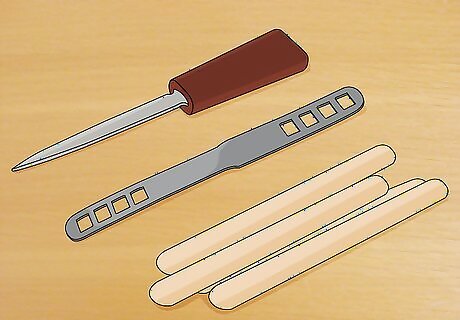
Find a tongue depressor or similar tool. Some envelopes — but not all of them — can be gently opened using nothing but a flat, curved wooden tool, such as a tongue depressor. According to an old CIA manual, the tool should have a smooth edge, preferably with a curved, blunt tip. These tools can be made by filing down a piece of wood or an ivory piano key blank, but any flat tool with the shape described should work.

Poke the tool under the corner flap. Look at the corner of the envelope flap for a small opening that hasn't been glued down. Carefully insert the tip of the tongue depressor or other tool into this opening. If the flap is completely sealed, carefully work a wire or other thin object into the corner to create an opening for the tongue depressor.
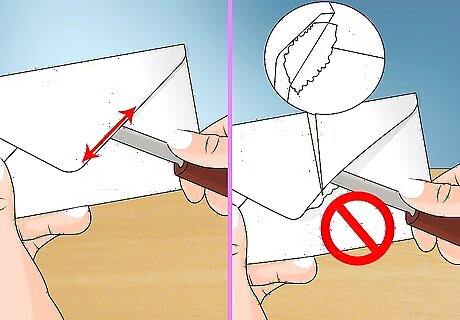
Be prepared to stop if the flap doesn't give way. Follow the steps below methodically, use slow, small movements. If the paper doesn't respond, or if you hear, feel, or see any tear in the paper, stop and move on to the next step.
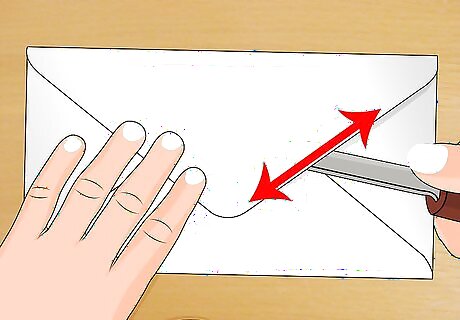
Hold the envelope down and rock the tool up and down. Use your non-dominant hand to hold the envelope flat against the table so it doesn't move. Gently rock the tool in your other hand up and down, applying light pressure to the edge of the envelope flap. If the envelope responds, repeat this technique to unseal the rest of the flap. If it resists, try the next step.

Dampen a cotton swab slightly. Pour out a small amount of clean water, preferably distilled, into a bowl or cup. Dip a cotton swab into it, then press the cotton swab against blotting paper or a paper towel to remove excess water. Water can only be used in small amounts to weaken the paper and glue of the envelope flap; too much water can cause the ink to bleed and the paper to tear. If you have opened the envelope partway, you can fold a piece of blotting paper and stick it under the flap to absorb any excess water.
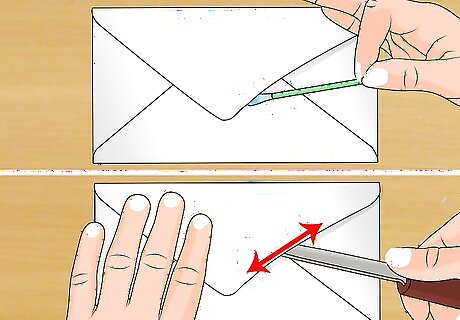
Press the wet swab over the stuck flap. Focus only on the area that you're stuck on. Press down and wait a few seconds for the glue to soften before trying the same lifting technique with the tongue depressor. Repeat until the flap comes loose, or move on to the steam method if it remains stuck. Never apply water to an area with ink or a stamp over it. Some types of envelope adhesive are not water-soluble. If you notice no results at all, try the cutting method instead. If you notice minor results but not enough to get the envelope open, try steaming.

Try other flaps if present. Some envelopes have multiple "built in" folds that have been sealed during manufacture. If these respond to this technique, you can sometimes open the envelope at the side instead of the top. Whichever method you choose, the flap can be sealed again using tiny dabs of glue, spread over the flap with a toothpick. Some envelopes will become sticky again when the glue is slightly dampened.
Freezing an Envelope
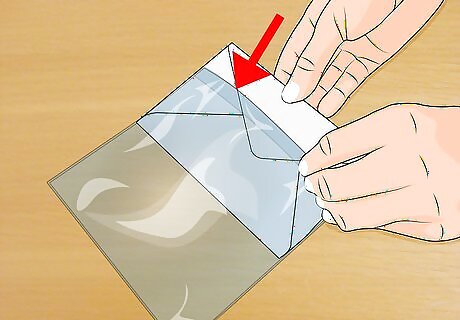
Put the envelope in a plastic bag. This will protect it from moisture while it is in the freezer.
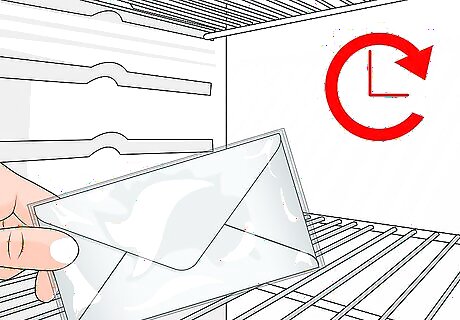
Put the envelope in the freezer for a couple hours. Some envelope glues, but not all of them, may become loose and tacky again when frozen.
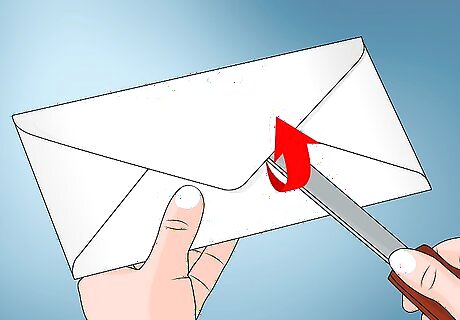
Pry the envelope open. Use a blunt, smooth tool such as a tongue depressor or butter knife, or carefully use a penknife. The flap will not come free on its own, but if you're lucky, it will become loose enough to lift without tearing.
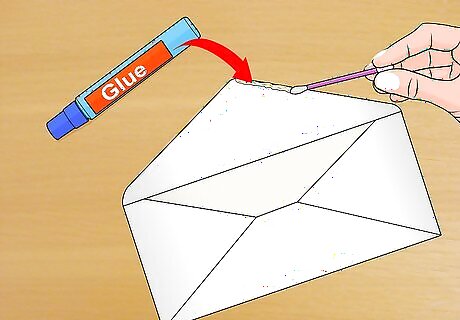
Seal the envelope again when finished. Some envelopes can be sealed again by dampening the glue on the flap with a damp cotton swab. Others may need to be sealed using inconspicuous dabs of glue.
Steaming an Envelope Open

Use this on envelopes that were licked closed. This method may not work on self-adhesive envelopes, since the glue used (typically latex) is not water-soluble. If you don't know which type of envelope you're handling, use a small amount of steam to test the method without much risk of damaging the paper and ink.

Start with a cup of boiled water. Pour boiling water into a narrow cup. This won't produce much steam, but is a recommended starting point for beginners to reduce the risk of damage to the paper. If it doesn't work, the steps below will move on to more powerful, riskier methods. If the envelope ink looks wet or starts to run, remove from the steam and try another method.
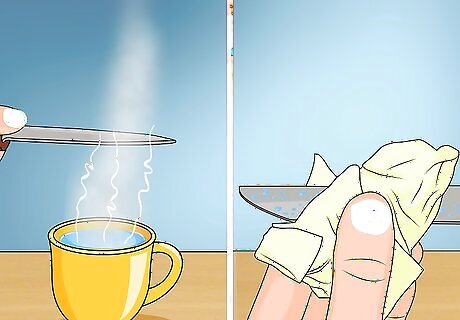
Warm a flat opening tool. Warm a tongue depressor, butter knife, or other flat, blunt tool in the steam for ten seconds, then wipe off the water droplets. This prevents the steam on the envelope flap from condensing around a cold tool, which can cause water damage to the paper and ink.
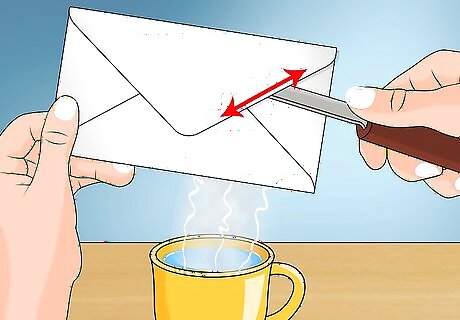
Attempt to open the envelope. Place the warm tool against the corner of the flap. Hold this corner directly in the path of the steam. Move the envelope gently against the tip of the tool, pausing whenever you feel resistance. The tool should stay in place, so the area you're working on always remains in the steam. As you work, rotate the envelope so the freed flap doesn't touch the envelope again and reattach. A smooth, continuous motion is less likely to leave wrinkles, but involves a higher risk of damage if you are not experienced at this task.
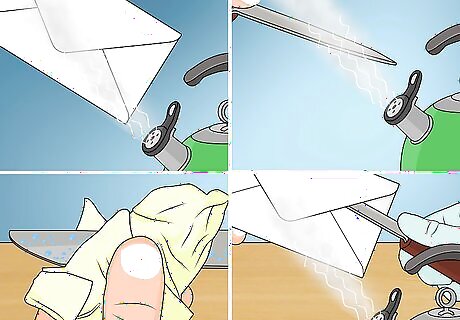
Try a jet of steam from a kettle. If the gentle steam is not enough to do the job, try keeping a water-filled kettle on to produce a constant jet of hot steam. Repeat the steps above to open the envelope in this hotter steam jet. Move quickly but carefully, as too much steam can wrinkle or dampen the paper. Wear an oven mitt to protect your hands. If your kettle doesn't produce a focused jet, stick a spoon or other heat-safe object into the spout to narrow the opening.
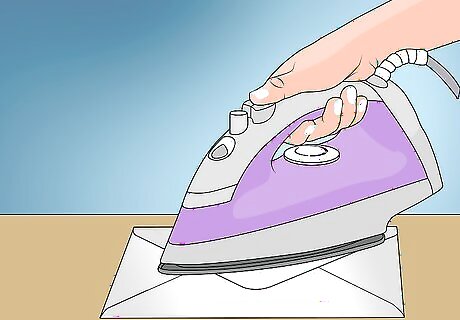
Use an iron to smooth the opened envelope if necessary. Wait for the envelope to cool and dry before replacing the contents. If the envelope's paper or its contents become wrinkly after drying, cover with a dry cloth and use an iron on the lowest possible setting over the cloth, to smooth the paper out again.
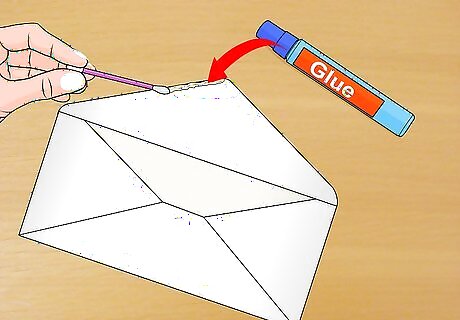
Once back in shape and dry, slip the contents in and re-lick, or use a small dab of glue to secure once more. You could also try freezing the envelope for a couple hours; some glues will become sticky again once frozen.
Cutting and Repairing with Papier-mâché Paste
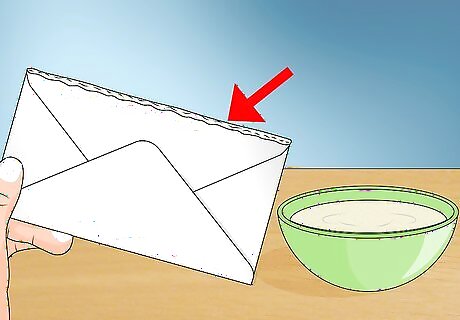
Know the risks. This is a creative method for hiding a cut in the side, using Papier-mâché paste to seal the opening. If the papier-mâché ends up too thick, too weak, or too sticky, its presence will be obvious. This method is best used on letters that won't be carefully examined or heavily handled. You may also need plenty of time to adjust the papier-mâché seal.
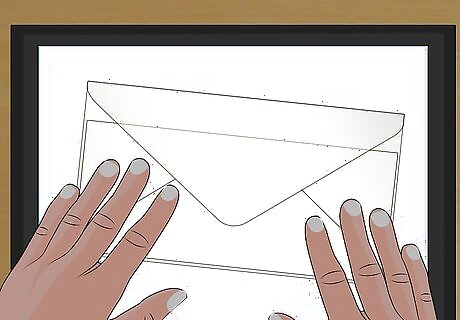
Hold the envelope in front of the light. Hold it up to a bright light or window so you can see the shadow of the document inside. Take a mental note of its position and take care not to disturb the document inside.
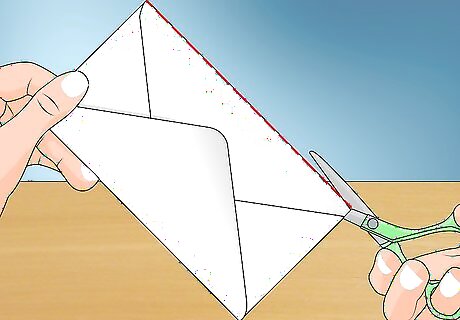
Cut the corner of the envelope. Using a pair of sharp, small scissors, snip off an absolutely tiny corner, preferably the bottom, while ensuring you do not snip the document.

Slice open the short side of the envelope. Cut along the crease of the side of the envelope, not removing any width but effectively opening your envelope. You can now read the document inside, or insert any materials you forgot to include in your mailing list.
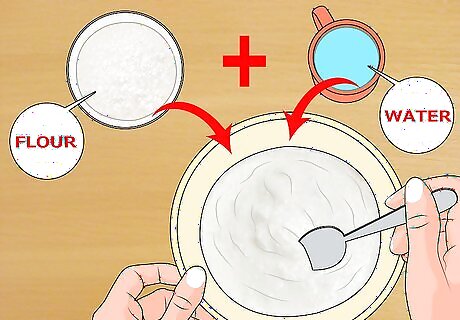
Make a small amount of papier-mâché paste. Mix white flour and water together to a fairly runny consistency. Test this on a spare piece of folded paper to see if it will stay stuck together once dried. Add more flour if necessary until the mixture dries strong in a thin layer. Boiling the flour-water paste will make the mixture dry clear instead of white or off-white, but will also make it weaker. Boiling is crucial for dark-colored envelopes to make the papier-mâché less obvious.
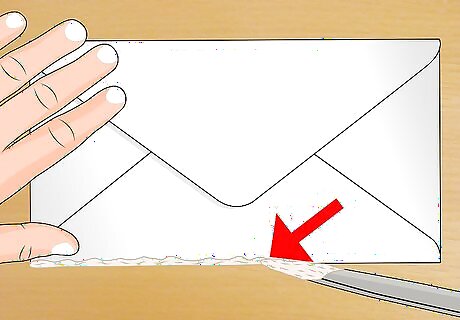
Seal the cut with Papier-mâché once finished. Using a letter opener or some other smooth-edged instrument, spread the paper mâché paste to the edge of the cut in the envelope. Make sure not to get the document inside wet.
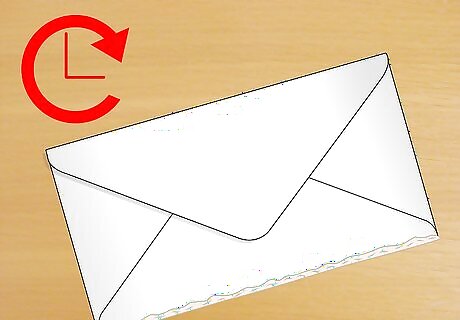
Wait for it to dry and repeat if necessary. Wait until fully dry. For a stronger seal, apply a second layer of papier-mâché paste. Repeat until there are no holes visible and the side stays stuck together.

Using fine sandpaper, sand away the rough bits of paste from your envelope. Work slowly to avoid scratching the envelope itself, especially if there is ink on the edge you're sanding. After the visible paste is removed, the envelope should look like an ordinary envelope that has never been opened.




















Comments
0 comment